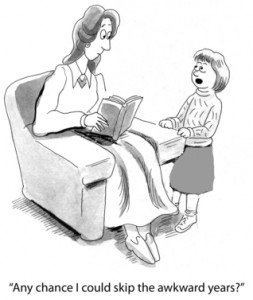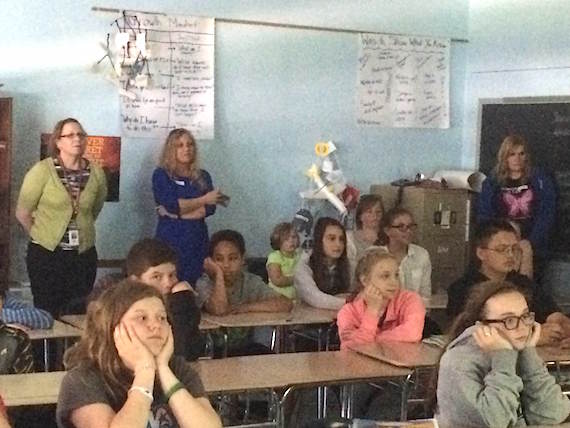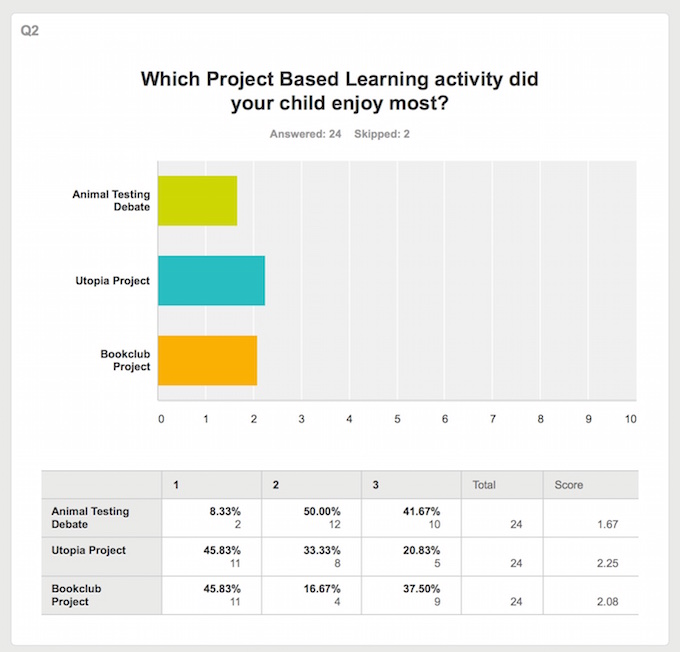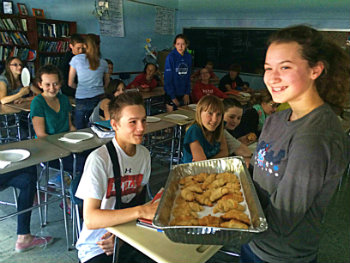Teachers Really Need to Work with Families

I’ll admit it. I used to be scared to death of parents. For good reason, mind you. I began my teaching career as an AP Literature teacher. I was 23 and my students were 17 and 18. As soon as their parents met me, I knew they were judging me.
How do I know this? Because one student’s dad sent me suggested lesson plans. Another asked me for my GPA. Luckily, I had a great department chair who helped me balance professionalism while also sending the “back off” message loud and clear.
Despite the sparks that flew back then, as the years passed I came to see that the very best way to help students is with a collaborative school/home effort. Initially, this back-and-forth communication was spent mostly in phone calls about students on the edge—of passing or failing, graduating or dropping out, succeeding or having major behavior issues. Over time, it expanded.
Pulling in high school families
My success rate was good when I pulled families in, and I say families because in about half the situations, there were grandparent caregivers, influential uncles, or even an older brother or sister who could help.
I made sure to celebrate the most minor success (on time every day this week!) with anyone who’d listen. This was a long time ago – in a world where email was not widely used for such purposes – so I actually sent certified letters with certificates in them. Really!
Many teachers are like me. I loved teaching high school English. Literature was my passion. I could talk Scarlet Letter, Catcher in the Rye, and The Crucible endlessly. You’ve never seen enthusiasm like mine about writing a research paper—and this was when boring research note cards were in vogue.
Parents eventually started to trust me, both as I grew older, and as I garnered a reputation for fairness and as a challenging teacher, which went a long way in the affluent district where my career began.
Suddenly, middle school

The first thing I noticed was that middle school students were extremely loud. And needy. No longer was my teacher identity that of a cool, albeit nerdy, older sister.
Luckily, I found a mentor right away who had already made this transition from high school to middle school. Her first piece of advice, paraphrased from some middle school guru, no doubt, was this: teaching high school is teaching a subject; teaching middle school is teaching children.
A few years of struggle, and I found my comfort zone, as well as a new philosophy of teaching that leaned towards Project Based Learning and lots of choice. As an offshoot of this style of teaching, I began inviting families to come watch their children present or see an exhibition of their work. They were very enthusiastic about being invited in, mostly telling me that requests for parent involvement had dwindled to next to none since elementary school, and they missed it terribly.
 Seeing school as a parent
Seeing school as a parent
But, the real game changer came when my own daughter went to school. Suddenly, I was at a loss. What did she do all day? If I asked her, she’d tell me about who she sat with at lunch, and her favorite conversation in kindergarten was who got in trouble. I think she liked to live vicariously. In any event, I couldn’t figure out what she actually did there. Sure, I’d get the worksheets and a newsletter here and there, and I felt a little better. But still, I wanted to know what it was like to be there.
This experience, coupled with an interest in this “newfangled” social media and email communication, led me to the single biggest discovery of my teaching career: Most parents feel like me. They want to know what your classroom feels and looks like, what the expectations are, what your pet peeves are, how is their child really doing, is s/he fitting in?
For the first few years after this revelation, I did a bunch of upfront communication. I sent long, and looking back, overwhelming, parent letters, where I told them a million things. Unfortunately, I sent this the same week as everyone else’s huge mound of “junk mail” that comes at the beginning of the year, so I am sure it went unread or skimmed (by the more diligent parents).
Digital connections
I decided that I needed to try something else, to engage parents more frequently, in smaller chunks and with visuals—an email “blast.” I gathered email addresses at Parent Night, and began sending reminders, attaching the PowerPoints I’d used to teach a particular skill, also attaching copies of assignments, and sending links to my Quizlet and other great practice sites like Grammar Bytes.
I’d send pictures of their kids doing things in class or videotape a presentation that they couldn’t attend. I posted my own education writing to my website, AmberRainChandler.com, and encouraged them to read what I was writing. This year, I have started posting exemplar projects and student work on my site as well.
The feedback and outpouring of encouraging words was staggering – for example, in the end-of-year survey above. As I began tweeting about my students, using their successes in articles I wrote, sharing pictures and videos, and always providing newsy and casual updates on what was coming up, it was clear to me that my students were doing better and more and more parents were choosing to communicate with me.
I became the go-to teacher when a student had a personal issue that needed attention, and parents began sharing their children’s other successes with me—Girl Scout awards, sporting victories, and making first communion. They’d tell me about their kids, and, in turn, I could have better relationships with their child.
Today, I can’t imagine going back to the philosophy of “back off, this is my classroom,” though I understand why I thought that way early in my career.
How do you open your classroom to families?
Here are some strategies and tools that have helped me. Feel free to “creatively copy” what I do, and by that I mean take my name off it.
1) Begin the year by asking questions. Not making statements. Parents know their kiddoes. I use a survey called Tell Me All About It. Students fill out one side, and parents fill out the other.
2) Provide parents with a cheat sheet. Something that lets them know your philosophies (there’s no due-the-next-day homework; everything except a final assessment is a rough draft, including quizzes and projects; students learn best by doing; grammar is non-negotiable: if it isn’t correct, I’ll teach the child to fix it, etc.). Keep your own voice. It shouldn’t sound like a boring mission statement, but more like a glimpse inside your classroom.
3) Share student life and work. If you want to use pictures, student work, etc. get permission upfront, at the start of the year. I send a letter explaining that I’m always trying to promote the good work of their children, and I will only show their children at their best.
4) Create the email blast. I do it the really archaic way, which is to simply create a huge list as a group. Then, I email myself whatever I want to send and BCC the group. This way, you won’t be sharing anyone’s email address.
5) Let the kiddoes have some fun too. I just started asking students to create and maintain an email account this year because I wanted them to send me documents electronically so that I could check if they were inserting live links correctly. I then offered them a chance to get my emails as well, and it has encouraged them to email me questions, comments, and their own pictures from things. They are digital natives—this is their world—and, next year, if I am brave enough, I’m thinking of using Twitter to communicate with them.
6) Let the grown-ups in. And by “them,” I mean parents, sisters, brothers, aunts, grandmas, friends of the family, your administrators, and anyone who is a personal cheerleader for a child. I have teared up on more than one occasion when I see the pride in a parent’s eyes who had no idea that their maybe-difficult teenager can create a movie trailer or their shy son can do a Prezi with ease.
7) Don’t let anyone tell you that this type of community building is not Common Core Aligned. Speaking and Listening are there for a reason. It is a College and Career Ready standard to use technology to enhance communication, and it sure is an important 21st Century Skill. And, for those of you who are living by Charlotte Danielson’s rubric for your APPR, to earn a four in the “Knowledge of Resources” category, you need to broaden your classroom and engage the community.
8) Don’t believe that you don’t have time for this. If nothing else, THIS is what you must make time for. Relationships are built when children know that caring adults are on their side. If teachers team up with parents and community members, we can create success for even the most difficult students.
Amber Rain Chandler is a National Board Certified ELA teacher and education writer in Hamburg, NY. She leads professional development in Project-Based Learning, Danielson’s Domains, and Differentiation. Follow her on Twitter @MsAmberChandler and visit her website, AmberRainChandler.com.







































I so appreciate these concrete ideas for building relationships with the parents and families of my students!
Hi Amber, as a parent, I have run into many teachers that were of your first reaction to parents. Thanks for figuring it out and sharing it. You are truly a great teacher!
I really loved this article. I sure plan to share this article and try some of these strategies next school year.
Great advice! One of the most down-to-Earth blogs with real application for my coming year! Thank you!
Your passion in connecting to your parents is evident with your commitment to try all available resources. Thank you for sharing!
This article presents unique ways to build and strengthen the teacher and parent relationship that works for the common success of students. Thank you for sharing.
Thank you for sharing this. I use many similar strategies with my middle school orchestra students. Relationships with families/students really make most every other situation with the children workable…even the “difficult” ones.
Great post Amber. Looking forward to trying some of your ideas. I have written about creating a learning triangle between teacher, parents and students here: http://tomorrowslearners.com/fostering-a-learning-triangle-through-technology/ Would love to hear your feedback.
Amber, you are very inspiring! I’m a future teacher and enjoyed learning about your journey.